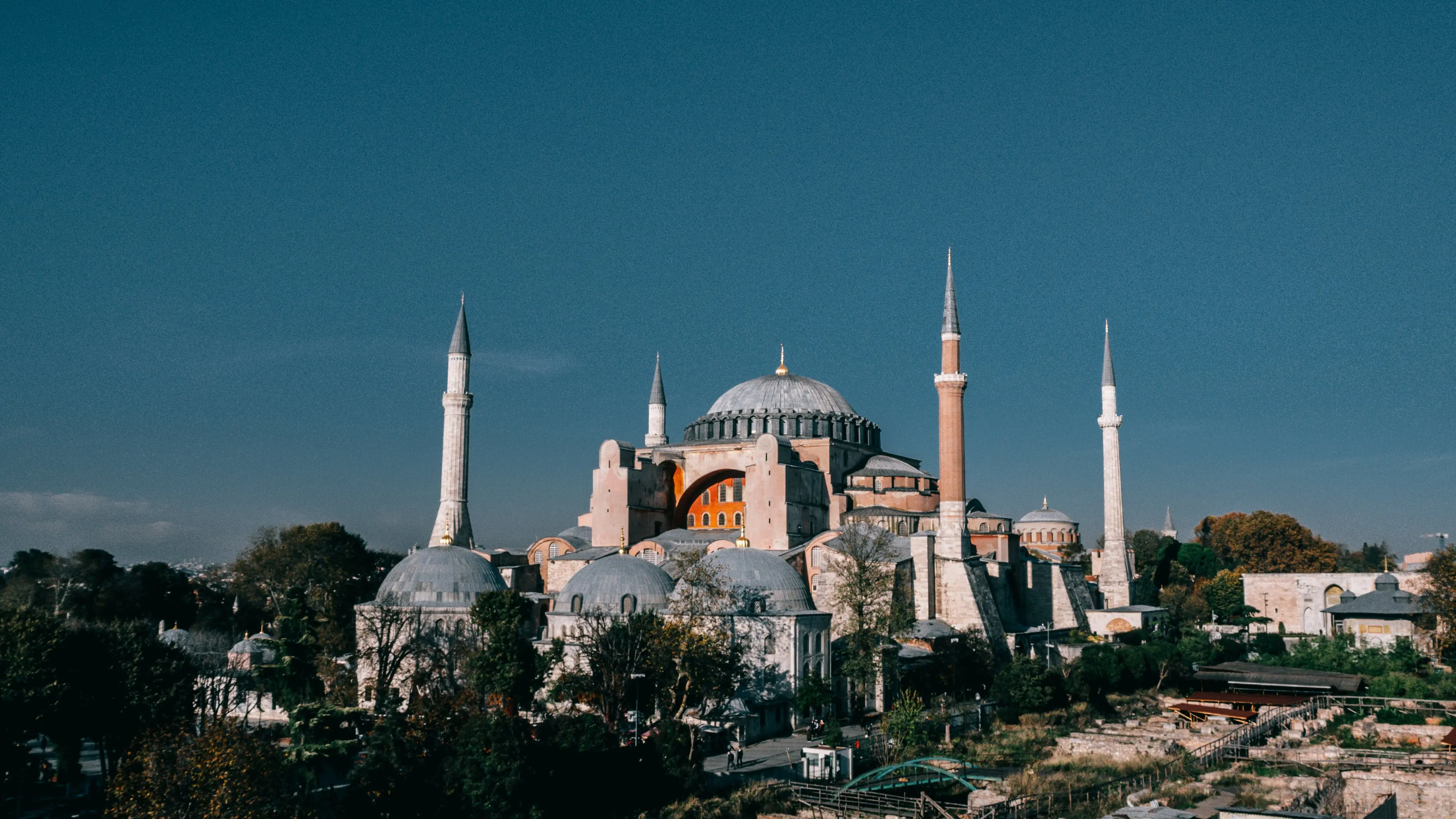Title of Artist & Artwork: Hagia Sofia, by Isidore of Miletus and Anthemius of Tralles
Location in Course: Module 4, ArchitectureDominant Medium: Ashlar (limestone) and brick
Techniques: The architects designed new mathematical architectural concepts to develop the interior space and the dome, which was supported through four triangular pendentives. The use of the pendentives provided the dome with support that also freed up interior space in the interior of the basilica by shifting the circular dome’s weight onto a square that was supported by the pendentives below (Cohen).
How Does This Use of Material & Technique Contribute to Its Impact: What was unique about this design was that it did away with the typical columns or pillars that were used prior to the development of the pendentives, which were seen to be disruptive inside the space itself. The design itself was revolutionary at the time, because the dome was able to be larger in diameter without needing the same internal column/pillar support as other basilicas that had been developed previously. The first dome and the structure of the Hagia Sofia in 537 CE were not perfect, as both the dome and the structure experienced a partial collapse 20 years later in 557 CE. The shallowness of the original dome placed too much outward pressure on the structure, which led to the walls giving way. In the reconstruction, the structure and the dome were updated so that there were an additional 40 structural ribs within the design to provide better support. Additionally, the dome itself was given a much wider arch as a means of fixing the issues with the previous dome that had been too shallow (Cohen, 2015).
Why I Chose This Artwork: I chose this artwork because it is one of my favorite world wonders. It has also undergone significant changes throughout its history, from its collapse to being burnt down. It has also served different populations and religions over time, showing that the architecture has been powerful and impactful enough that it has been adapted for the use of different religions. While it originally served as a basilica for the Greek Orthodox church, it has also been held by the Romans and the Ottoman Empire, which led it to be converted to a mosque (Cohen). Not only does the architecture remain impressive centuries later, but it also shows the importance of art and architecture across different cultures. While there have been cosmetic and structural changes to the Hagia Sofia over time, the general principles introduced by the original artists have lasted for centuries. It not only has become a key cultural and religious landmark for various civilizations throughout history, but it also has inspired architectural design since the original artists determined new mathematical methods for providing a unique form of structure and support.
Works Cited
Cohen, Thomas. “Hagia Sofia.” Ancient History Encyclopedia. 19 November 2015. Accessed from https://www.ancient.eu/Hagia_Sophia/








